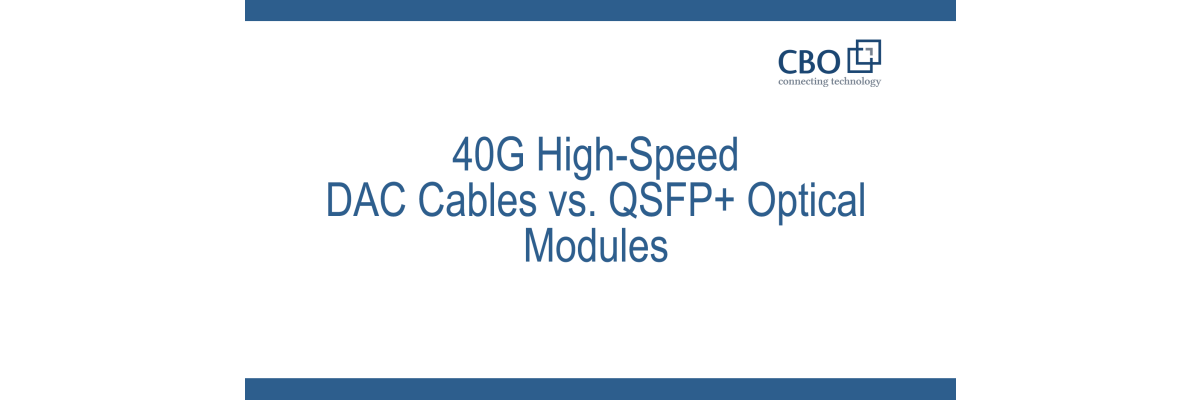News
Direct Attach Cable
A study conducted in 2021 on the future of the market estimates that the global NGFW market will grow by almost 4.69 billion dollars by 2023.
Network engineers face several complex decisions when selecting the most appropriate fiber optic cabling for their individual and specific requirements.
Direct-attach copper cable is a cable assembly with fixed connectors at both ends. In the networking industry, people usually call these cables as DACs. Active copper cable and passive copper cable are the two types of direct attach cables.
High-speed 40G QSFP+ DAC cables and QSFP+ optical modules can be used as solutions for 40G networking at the data center level.
The main components of a transmission system are: the transmitter (TX), the communication channel and receiver (RX). Today we will focus on the communication channel. This can be materialized in the form of either a physical wired medium or a wireless medium such as air. The wired medium can be found in today’s data center dense cabling in the form of twisted pair or optical cable and in the last mile loop as a coaxial cable.
For many years copper was the standard for transferring communications signals. In recent years copper wire has been replaced with a new system called fiber optics cables. You've probably heard of this technology and how it is used by many different industries, including communications, the military, aerospace, and medical robotics, to name a few. These cables allow for higher speeds of signal transfer, provide greater resistance to electromagnetic interference from radios, engines and other nearby cables, and are known for being much easier to maintain than copper wires.
400G a reality now! The main benefit in moving from 100G to 400G is that superior connectivity achievable between the leaf and spine. However, older form-factors are not compatible with 400G optics. Thus, new form-factors were required. Currently, there are two recognized and regularized form-factors for 400G cables and optical modules
As the demand for simpler and more secure network architectures grows, Datacenters must find a solution to accommodate the large number of devices and at the same time deploy a cost-effective solution. The key extension component of a data center that saves money on the long run and that would provide a stable and easier to maintain and upgrade data center networks are Direct Attach Cables. Because networks and the demand for high bandwidth components are growing, Direct Attach Cables emerged as the optimal solution to support this.
Since Active Optical Cables (AOC) and Direct Attach Cables (DAC) are a alteration of optical transceiver, they are used to connect switches with one another when creating a stack or switches to routers or servers. A Direct Attach Cable (DAC) can be produced as passive or active variant. As the passive DAC has no active components, it offers a direct electrical connection between corresponding cable ends. This method can also be completed by an active DAC, which is considered active because there are extra electronics embedded inside the connectors. Therefore it helps to advance signal quality, offering a longer cable distance. The DAC is a fixed assembly that can be bought in several lengths for short distances of up to 15 Meter.
In the modern and ultra-high tech Datacenters of today, more bandwidth is needed and used to support the latest demands in the Networking world especially in a server-virtualization environment where multiple virtual machines are being combined on a single physical host server. To be able to accommodate the growing number of operating systems and applications and at the same time providing scalability and reliability, virtualization requires noticeable increased data transmission rates between the servers and the switches in the Datacenter.
 English
English
 Deutsch
Deutsch
 Espaniol
Espaniol















